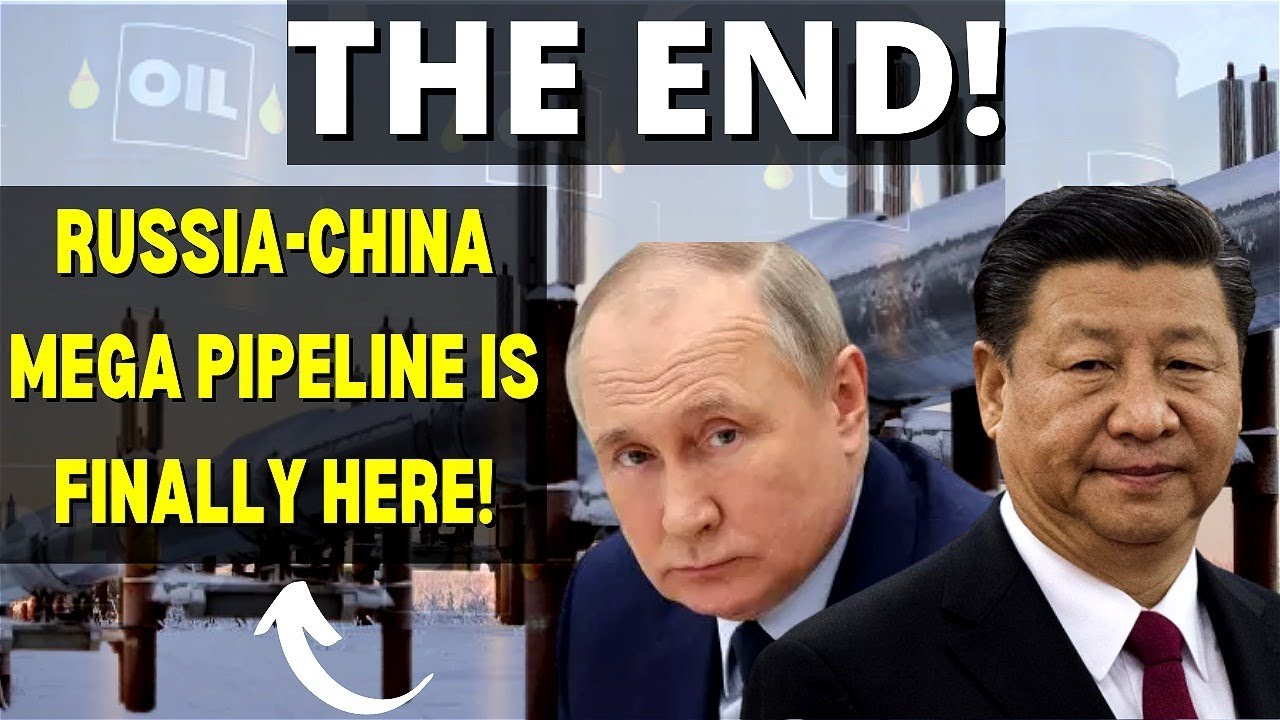
China And Russia JUST SHOCKED The World With Their NEW MEGA Gas Pipeline
Keep up to Date & Bypass the Big Tech Censorship
Get uncensored news and updates, subscribe to our daily FREE newsletter!
The energy partnership between China and Russia has been vital for their trade and economic cooperation lately. Their joint efforts in the oil and gas sector have had a significant impact on the global energy market.
As this collaboration continues to grow, China has become one of the biggest purchasers of Russian oil and gas. And the energy sector has been the top area for cooperation between the two states for a while.
It’s been beneficial and extensive. The foundation for the cooperation began with the “Russia-China Joint Statement” in 1996. The collaboration began with oil and gas and now includes coal and nuclear power.
| Recommended Books [ see all ] | ||||
|---|---|---|---|---|
 |  |  |  |
 |
Alexander Novak wrote in the Energy Policy journal that Russia needs to invest up to $67 billion to build the Power of Siberia 2 and “Far Eastern” pipelines. Additionally, related industries like metallurgy, cement, and chemicals will need $27 billion.
Novak emphasized that diversifying export structures is crucial for Russia since it lost its European markets. Before the Ukraine invasion, European markets accounted for 49% of Russia’s external gas sales.
Russian supplies to China through the 3,968-kilometer Power of Siberia 1 increased by 48% in 2022. The total volume of gas reached a new record of 15.4 billion cubic meters over the year.
Gazprom, the Russian state energy company, plans to deliver even more gas using the 2,600-kilometer Siberia 2 line by 2030 – up to 50 billion cubic meters.
This clearly shows Russia and China are getting closer in terms of energy partnership. The development of the Far Eastern line is still in its early stages. In February of last year, Gazprom and China National Petroleum Corporation inked an agreement.
And at the end of January, the two nations settled on a preliminary intergovernmental agreement. This draft includes a clause allowing payments to be made in rubles and yuan.
Mongolia will be the conduit for transporting gas from the Krasnoyarsk and Irkutsk regions via Power of Siberia 2. Meanwhile, the Far Eastern route will originate from the Sakhalin Islands located just north of Japan.
China relies heavily on Russia for energy imports, with Russia being their biggest source of energy and second biggest source of crude oil.
Gazprom has revealed plans to break a historical record in 2023 for daily natural gas exports to China via the Power of Siberia pipeline. This is due to their daily export volume surpassing the 2023 agreement requirements since January 1. T
he partnership between China and Russia in the oil and gas industry not only brings economic benefits but also has significant political implications, particularly considering Western sanctions.
The strong bond between the two countries is represented by this, and they are determined to work together for their mutual advantage.
Their partnership has been so fruitful that other states aspire to imitate this collaborative approach. It’s no secret that Moscow and Beijing are teaming up to boost their energy cooperation.
Recent data from China’s General Administration of Customs reveals that Russia shipped 43.9% more liquefied natural gas to China in 2022. This totals to 6.5 million tons, and 8.3% more oil, hitting 86.25 million tons. This translates to a 64% increase in monetary terms and a 10% increase in physical terms since the start of 2022.
Looks like the partnership is paying off for both countries! Xi Jinping emphasized that the collaboration in energy between China and Russia is vital for their practical relations and a powerful tool in safeguarding global energy security.
Furthermore, Sino-Russian energy cooperation places high importance on the oil industry. Igor Sechin, the CEO of Rosneft, revealed that from January to October 2022, Russian oil exports to China surged by 9.5%, reaching nearly 72 million tons or 1.7 million barrels per day.
And as Asia’s demand for oil grows, Rosneft is developing the Vostok oil project, which aims to produce 115 million tons annually by 2033. The project will also leverage Russia’s Arctic waters to transport oil via the Northern Sea Route, lowering the delivery time and costs.
CNPC and Rosneft Oil made a deal for more than just the oil project. They also agreed that Russia will keep providing China with 100 million tons of crude oil for the next decade through Kazakhstan.
Since January, CNPC has already imported over 300 million tons of crude oil and 15 cubic meters of natural gas from Russia through the pipeline.
In 2019, Rosneft and ChemChina partnered up in the petrochemical industry, expanding their cooperation


